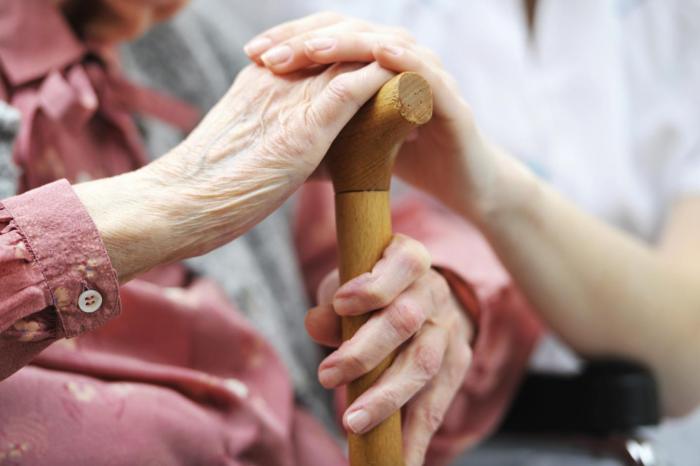Nursing home infection rates are on the rise, a study from Columbia University School of Nursing found, suggesting that more must be done to protect residents of these facilities from preventable complications. The study, which examined infections in U.S. nursing homes over a five-year period, found increased infection rates for pneumonia, urinary tract infections (UTIs), viral hepatitis, septicemia, wound infections, and multiple drug-resistant organisms (MDROs).

As nursing home infections become more common, simple steps like hand-washing or using sanitizer can help stop the spread of germs.
Credit: Columbia University School of Nursing
“Infections are a leading cause of deaths and complications for nursing home residents, and with the exception of tuberculosis we found a significant increase in infection rates across the board,” said lead study author Carolyn Herzig, MS, project director of the Prevention of Nosocomial Infections & Cost Effectiveness in Nursing Homes (PNICE-NH) study at Columbia Nursing. “Unless we can improve infection prevention and control in nursing homes, this problem is only going to get worse as the baby boomers age and people are able to live longer with increasingly complex, chronic diseases.”
Herzig and a team of researchers from Columbia Nursing and RAND Corporation analyzed infection prevalence from 2006 to 2010, using data that nursing homes submitted to the U.S. Centers for Medicare and Medicaid Services. While UTIs and pneumonia were the most common, infection prevalence increased the most – 48 percent – for viral hepatitis. Herzig presented findings from the study at IDWeek 2014 in Philadelphia.
More research is needed to determine the exact causes behind the increases in infection prevalence, Herzig said. But there are several relatively simple interventions that have been proven to help reduce the risk of infection – and that families should look for when selecting a nursing home for a loved one.
UTIs, far and away the most common infection in nursing homes, increased in prevalence by 1 percent, the study found. UTIs can be prevented by reducing the use of urinary catheters and increasing the frequency of assisted trips to the toilet or diaper changes for residents who are unable to use the bathroom. Families evaluating which nursing home to choose for a loved one should ask what protocols are in place to decrease catheter use, and they should also ask how the staff cares for residents with diapers, Herzig said. “Nobody wants to think about diapers, but even if your loved one enters the nursing home able to use the bathroom independently, they may need assistance down the line. Seeing how well toileting needs are met is one way to assess infection risk.”
Pneumonia climbed in prevalence by 11 percent, the study found. For pneumonia, and other infections that can spread through the air or contact with contaminated surfaces, proper hand hygiene is essential for prevention. Residents, visitors, and staff should all have easy access to sanitizer or soap and water to clean their hands and be encouraged to do this frequently. “When you walk into a nursing home for the first time, you should easily spot hand sanitizer dispensers or hand-washing stations,” Herzig said. “If you don’t see this, it’s an indication that infection control and prevention may be lacking at the facility.”
MDRO infection prevalence increased 18 percent, the study found. Screening for MDROs is an important tool for reducing the risk of MDROs, Herzig said. Families should ask whether residents are routinely screened for bacteria like C. difficile and methicillin-resistant Staphylococcus aureus (MRSA). While some nursing homes may only screen residents who are symptomatic or at high risk for infection, routine screening of all residents upon admission is likely to be more effective, Herzig said. In addition, it’s worth asking whether a nursing home has private rooms to allow for isolation if necessary and whether families are consulted when their loved one shares a room with a resident who has an infection. “Isolation is a common way to contain MRSA and other infections in hospitals, but in nursing homes this isn’t as common because these facilities are tailored to residential needs. If the nursing home does have rooms for isolation, it suggests a more robust approach to infection prevention and control.”
